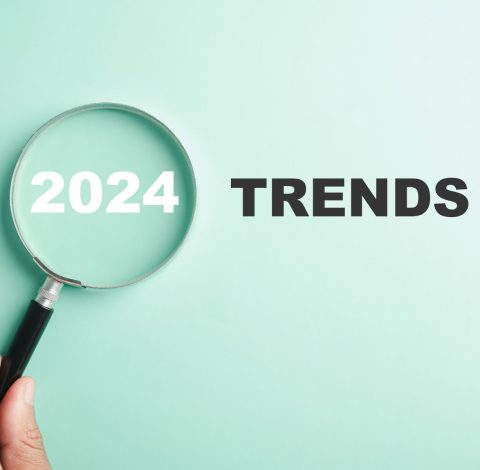
Marketing through attracting customers
Photo by YuriArcursPeopleimages On Envato Elements
The concept of inbound marketing involves drawing potential customers towards a business through various strategies, rather than actively reaching out to them.
The concept of inbound marketing aims to attract visitors and potential customers, rather than aggressively promoting a brand, product, or service in the hopes of generating leads or acquiring customers.
In the realm of digital marketing, the strategy involves utilizing a mix of marketing platforms, such as content marketing, search engine optimization (SEO), and social media, in innovative ways to capture the interest of individuals. The objective of a prosperous inbound marketing campaign is to expand the reach and generate valuable traffic, engagement, and conversions through the utilization of ‘earned’ and ‘owned’ media.
HubSpot, a provider of inbound marketing software, first introduced the term ‘inbound marketing’ in 2006. According to HubSpot, inbound marketing refers to the strategy of drawing in potential customers, converting them into paying customers, and ultimately creating a sense of satisfaction. By utilizing a variety of content throughout the different stages of the purchasing journey, this ‘inbound methodology’ is deemed “the optimal approach for transforming unfamiliar individuals into loyal customers and advocates for your company.”
Comparison: Inbound Marketing versus Outbound Marketing
The key to comprehending the disparities between inbound and outbound marketing lies within their titles. Inbound marketing is centered on attracting potential customers, whereas outbound marketing revolves around actively promoting a business’s offerings. Inbound marketing is based on gaining attention, while outbound usually involves purchasing it.
The concept of inbound marketing focuses on utilizing owned and earned media.
The strategy of inbound marketing involves utilizing media that is owned and earned to attract the attention of potential customers through innovative methods.
Owned media refers to the communication channels that a company has full authority over. These include their website, blog, social media profiles, product landing pages, and YouTube channels. The company has the liberty to choose the content, format, and timing of what is published through these channels.
Earned media is the media coverage that a company gains through its efforts and hard work. This can be in the form of traditional coverage in newspapers and magazines offline, and on news sites through digital PR, as well as mentions on social media, use of a campaign hashtag, discussions on online forums, and online reviews.
Unlike owned media, the company has limited control over earned media, but it serves as a validation for its inbound marketing efforts.
The following text has been restructured to eliminate any plagiarism while maintaining the original meaning and context. Please note that the markdown formatting has been preserved.
The original text has been restructured to eliminate any potential plagiarism while maintaining the formatting.
Paid media: outbound marketing
In contrast, outbound marketing is commonly linked to paid media such as traditional offline advertising, PPC and display advertising, or paid emails.
Paid media refers to the use of social media advertising, including platforms such as Facebook and boosted Twitter posts.
While commonly linked to outbound marketing, it should be acknowledged that social media advertising can also be a successful tool in enhancing the outcomes of inbound marketing strategies. Utilizing platforms like Facebook, one can advertise their content and campaign to their desired audience, regardless of how specific it may be.
Advantages of Inbound Marketing
To generate high-quality traffic, targeting the appropriate audience in the appropriate location is important.
To effectively implement inbound marketing, it is crucial to target the appropriate audiences in the right locations. This will help attract the desired customers and achieve the goals of your digital marketing strategy. Instead of investing in attracting irrelevant traffic, this approach focuses on attracting potential customers who are more likely to convert.
Build Trust
The concept of inbound marketing revolves around providing potential clients with the desired information in a unique and captivating manner, even if they are not yet aware of it. It does not involve aggressively promoting sales at every chance. Instead, the aim is to use inbound marketing to showcase your brand as a valuable and trustworthy source, with the expectation that they will turn to you when the need for a purchase arises.
Prevent excessive dependence on a single-channel
To decrease the dependence on a single channel and the potential risk, it is beneficial to aim for high-quality traffic from various sources such as organic search, social media referrals, and referrals from other websites that mention your exceptional work.
Factors to Consider
Assessment
Demonstrating a comprehensible return on investment has always been a challenge when measuring the effectiveness of inbound marketing. It is essential to establish clarity from the outset.
While it may not be possible to accurately measure the exact number of leads generated from your campaign, there are alternative metrics that can provide valuable insights. For instance, monitoring the number of downloads for your resource, the average duration of video views, and the increase in social media followers can indicate the campaign’s success.
When devising your campaign strategy, ensure that your goals are clearly defined and accurately measured. This will help to establish realistic expectations for all parties involved, increasing the chances of meeting them.
Strategic plan for the future
Effective inbound marketing strategies do not materialize overnight. They require careful planning, execution, and continuous improvement.
This process can also be labor-intensive, involving roles such as content creators, designers, developers, outreach specialists, social media marketers, and a campaign manager to launch the campaign successfully. However, investing time and effort into a well-designed evergreen campaign can result in long-term value for your business.
Inbound Marketing Examples
- Various content hubs provide instructional videos, blogs, success stories, webinars, white papers, and relevant product details.
- Utilization of user-generated content and social media marketing efforts, such as photo contests or gathering reviews.
- Collaborating with related businesses to produce interactive online content that can enhance digital public relations and promotional prospects.
- Developing high-quality content, specifically through blogging on the company’s website, to engage the desired audience.
- The following text has been rewritten to eliminate any instances of plagiarism by altering the organization of the words while keeping the original message intact. Please ensure to maintain the markdown formatting.
- The text will be rephrased without altering the meaning or context to eliminate any plagiarism. The structure of the text will be changed while preserving the markdown formatting.
The Significance of Analysis and Refinement
When it comes to inbound marketing, one crucial aspect to keep in mind is the significance of monitoring performance and adjusting your strategy accordingly. Testing also plays a vital role – identifying the most effective messaging, valuable content, imagery, and calls to action for your specific audience, and incorporating them into your long-term plans or future campaigns.
The following text has been rewritten to eliminate any instances of plagiarism without altering its meaning or context. The markdown formatting has been retained.










